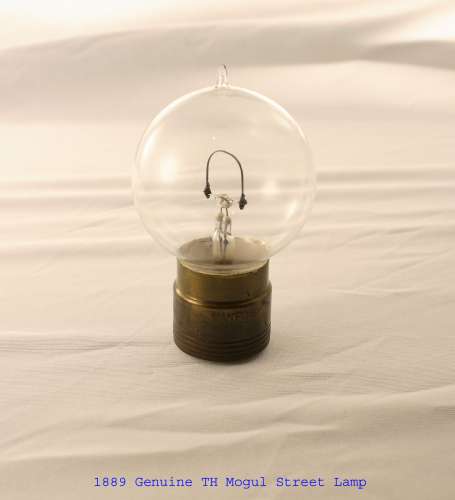c.1889 Incandescent Street Light Lamp Bulb
By Joe Maurath, Jr.; posted February 3, 2007
View Original: Click to zoom, then click to magnify (1092 x 1200) 162KB

|
Most of the earliest street lighting systems operated in the same way a modern string of miniature Christmas lights do. One wire going in the socket (or fixture)...and one wire out. And...with a provision such that if the lightbulb failed the remaining lamps in the string would remain lit. Arc lights (as I have shown within the "Insulators In Service" folder) operated within the same principle when on series circuits. Incandescent lights for street lighting service were initially quite primitave and shown here is an example that was used between c.1880 and c.1900. The latter were electrically intermixed with the arc lights which had the same ampere rating "in-and-out" of the fixture. The base of the lightbulb shown is of the Thomson-Houston type, nearly 3.5 inches in diameter and was designed so that when the lamp failed the thin piece of mica inserted within the lamp's base would very quickly short through and keep the streetlamps in the remainder of the "string" operating. |